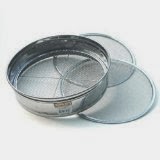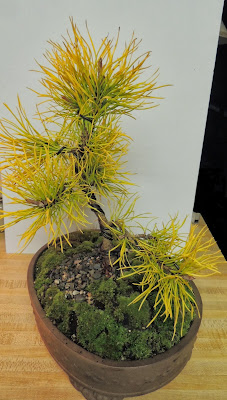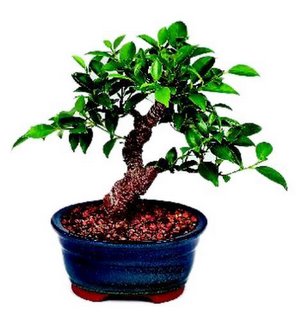Bearing in mind of course that not all of us are living around big city's and sometimes its real hard for us too find what we need and want so to try and make it fairly simple I have put together a pretty basic bonsai mix and you should be able to find all these materials nearly anywhere in the world if you do a little home work and look for them.
So with that in mind it was back to the drawing board searching out some basic material in my city with out any specific brand names. I did find what I wanted and I'm still going to pass on too you what I consider to be a very basic mix for 90% of all bonsai.
Now to start with we have what we call Inorganic and there are organic mixes for bonsai . So what is the difference you may ask, good question so here is the answer. An all inorganic mix will consist of only rock like materials such as lava rock, crushed granite, course sands, or pumice, of course the list can go on and on so the bottom line here is that if you wish to have an all inorganic mix then you do not wish to have any other material in the mix other than a stone or clay based substance and with no organic materials involved at all.
While yet on the other hand an organic mix will have perhaps some peat, pine park fines, and or some other types of general compost mixed in the mix to help stimulate the plant, acting as sort of a food for the plant. Although your plants truly need none of the later if you fertilize the plants regular during the growing season and you should be doing that anyway.
What were really trying to do here is create a mix that is fast draining and yet I do not want to sound contradictory you also need a mix that will retain some of the water and release it later. So a good choice for an Inorganic mix is as follows.
1: Pumice, or Red lava rock, or Decomposed granite and possibly some course sand if you like or you may in point of fact use all three of the above rock based products as I do and forget the sand.
Now for an organic mix we will use the same as above and add some sort of pine bark or some people use Orchid bark or other type of compost material but Orchid bark is rather expensive and most people like too keep the cost down and yet still obtain a good result.
So most other medium grade compost materials will work but bear in mind all of this material should be screened to obtain a uniform size and also to help eliminate the fines and to clean it. Now both mixes organic or inorganic will work for most all of your plants but your conifers will do better in the inorganic mix and your deciduous trees will do better in the organic mix. So then there could be argument as to why we would need both or even use both and to that I will simply say its a matter of choice rather than any necessity.
I believe that the main thing most of us miss here is that it will depend on where you live and the climate where you live that is going to dictate what you should be using as a mix for your plants. I live in the Great Northwest in the state of Oregon and trust me here in the winter months mother nature is our constant garden hose so the key here is to get all that water out quick so the plants roots can breathe and not rot and so it makes perfect sense that water will pass through a medium based rock substance rather than be left behind in a bunch of organic bark based compost products that will retain a lot of water and stay wet for days or even weeks at a time.
I personally use for all my tress and plants the inorganic mix and simply fertilize my bonsai on more of a regular regime and for get about the organic materials altogether.
Now as I stated above you will want to wash all of this material to get out any dusty dirt and or other materials that are not wanted in the mix and then screen it all so you can obtain a good uniform particle size for your finished mix. I use five gallon buckets and put all my products one in each bucket and then as I dip out each along the way and wash it screen it too get a finished material.
I save the screened finished material in yet another bucket and what is left over is most often too fine and so it is saved and set aside for later use as a base starter mix for cuttings or seeds.
Here is a basic set of sifting screens that I use and they consist of three sizes of screens and range from a large screen then medium and then of course a small and I always strive for the finished material to be of a medium size or about the size of a normal pencil eraser or half that size will also be alright in your mix but anything smaller should be passed on to the final screen or have totally passed through and is not wanted in the bonsai mix.
Once you have all three of your materials in one final bucket then of course mix them all together well and your finished. So once again Inorganic mix is as follows.
1: Pumice
2: Red Lava Rock
3: Decomposed Granite
4: Optional of course is Small pencil eraser sized crushed rock of any brand or kind and or coarse sand. The mix should be not too large and not totally small either a good gauge is to lay an ordinary penny in or near the mix and the materials used should be about 1/4th the size of the coin. Here below would be what a mix should look like when finished.
Most all conifers will need to be re-potted about every three to five years depending on the age of the plant younger trees will need to be re-potted more often while yet older trees less often.
Deciduous trees such as maples flowering and or fruit tress will need to be re-potted every year and or every other year.
I do not endorse or recommend any pactiular product here and only offer the items that I have wrote about as my choice of material used for my bonsai. Your products can or may be totally different, the choice and final dession is always yours to make as too what you may wish to use for your own bonsai.
If your unsure or question if the mix is safe or good then I recommend that you only plant a very inexpensive small tree or shrub in the mix first and then follow its progress for at least one entire season and then if your satisfied that your plant survived and is doing well than it would be safe to assume that this mix is safe and can be used on a nearly any bonsai. We would further assume that now our job is done and we need not not use any other materials or search for any other, this is true too some extent however there are other alternatives and or products too research and experiment with and who knows but with time and extermination you may find or stumble on too yet another good bonsai soil mix..
All of these products should be solid and not deteriorate or break down to any muddy substance and if for some reason they do then you have not washed it proper or purchased something other than what I have mentioned here.
Your end result is to put together a fast draining soil and still have one that will be absorbent enough to retain some of the water being passed through and not totally dry out in at least a day and if it does because temperatures are too hot and your material is drying out too fast then you will need to water more often even perhaps twice in a day in the hotter summer mounts.
Watering bonsai is a very critical factor in there survival or death so if your not sure then feel the soil and if its damp too the touch at the top of your pot then you should be alright and if not then watering may be advised. It never hurts to get your fingers dirty and scratch around a little in the soil the feel will tell you if your doing your job right, dry is a warning sign, moist is good, while mushy or soggy is a sign of too much water so just practice you will get the hang of it.
Thanks, for reading,
By: Harold Yearout ©Copyright 2014 Harold Yearout All Rights Reserved for more information feel free to contact me: h.yearout@gmail.com








